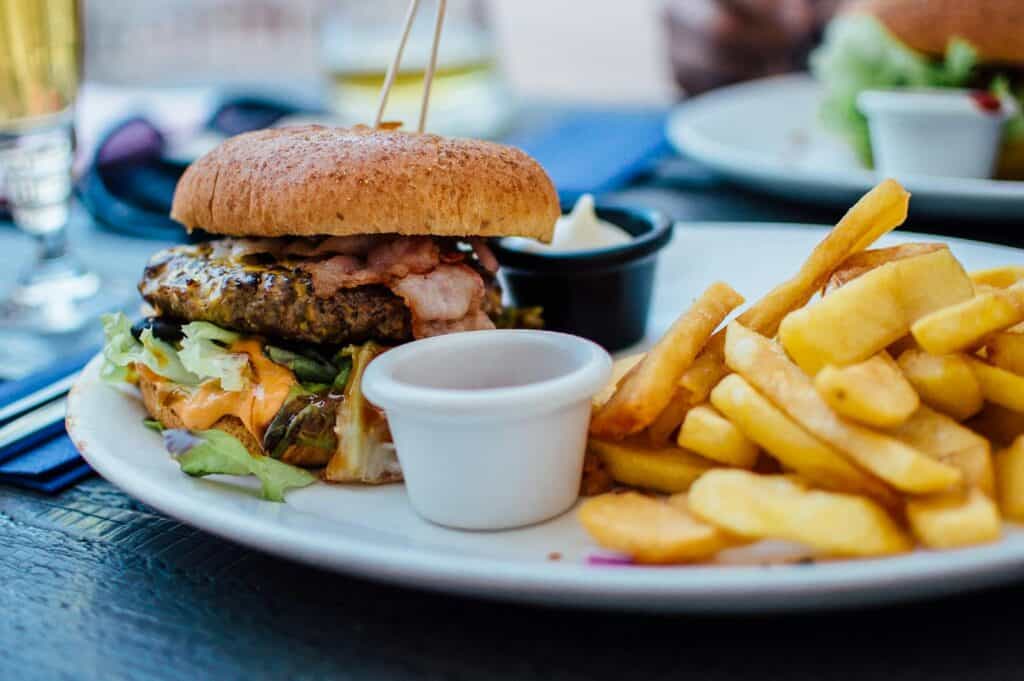Healthy living is possible for anyone, even if you are on a tight budget! There are different healthy diets to try and healthy shopping habits that can be adopted to help with healthy living. Nobody has the same diet and lifestyle, so what works for one person may not work for another.
Tips will help you improve your health with healthy living while saving money

Here are some helpful tips for healthy living on a budget:
1) Find affordable, healthy foods to eat.
There are many types of healthy foods that are affordable. Try looking for budget-friendly fruits and vegetables at your local grocery store or farmer’s market. There are also many healthy, inexpensive recipes online.
2) Cook at home instead of eating out.
Cooking at home is a great way to save money and eat healthy food. Restaurants often serve unhealthy, high-calorie meals. Cooking at home allows you to control what ingredients are used and how much salt is added. You can enjoy eating without breaking the bank.
3) Try a healthy diet that fits your budget.
There are many types of healthy diets to try, such as the Mediterranean diet or the vegan diet. Find a diet that fits your budget and will result in a healthy lifestyle.
4) Make a meal plan and grocery shopping list.
Making a meal plan and grocery list can help you save money while eating healthy food. When you have a plan, you are less likely to buy unhealthy foods or foods that you do not need.
Planning ahead will also help you avoid buying food that will go bad before it is eaten. Ensure to include on your list nutritious foods such as fresh produce. You can go shopping at a local store which offers a lot cheaper items.
Learning which store brands your grocery store carries can help you reduce your grocery bill.
5) Make healthy changes by using healthy alternatives.
One way to make healthy changes is by using healthy alternatives. There are many unhealthy foods that can be replaced with healthier options. For example, try replacing sugary drinks with water or unsweetened tea. You can also replace unhealthy snacks with fruits or vegetables. The nutrition you can get from these healthy alternatives is incredible!
You can also use healthier versions of other ingredients like olive oil instead of butter when cooking. This will reduce the amount of fat and cholesterol that goes into your food, while providing more flavor and nutrients. The best thing about doing this is how easy it’s going to be on your wallet since there are so many healthy options that are cheaper than the unhealthy ones!
6) Buy in bulk
Buying in bulk is another great way to save money on healthy foods. When you buy in bulk, you can get a better price per unit and have enough food for several meals. This is a great option if you have a large family or like to cook big meals.
Look for stores that sell healthy foods in bulk, such as a local grocery store or warehouse club. You can also buy food online from websites like Amazon.com.
7) Don’t shop on an empty stomach.
When you’re hungry, it’s easy to buy more food than you need. Plan out your meals ahead of time and try not to eat too much before going shopping so that you don’t overspend or buy unhealthy foods!
8) Keep track of your spending.
It’s important to know how much money you’re spending so that you can budget for healthy food and save on other things in life like vacations or entertainment. You might be surprised at what kind of savings there are when it comes to healthy living!
9) Shop smarter, not harder.
There are many ways to save money while shopping for healthy food. Try buying in bulk, looking up coupons online before going out, and using store loyalty cards with discounts on specific items like milk or eggs.
10) Take advantage of digital coupons.
You’re always looking for ways to save money, and if you happen across an app that offers digital coupons, it can be the perfect opportunity. Digital Coupons allow shoppers access discounts on healthy foods like fruits or vegetables, so they don’t have as much trouble deciding what is good quality food versus not worth buying at all!
Foods you should avoid

There are many unhealthy foods that people should avoid when trying to live a healthy lifestyle on a budget. Unhealthy foods tend to be more expensive and are not as good for you as healthy foods.
Some unhealthy foods to avoid include:
- Highly processed foods such as bacon, ham, and sausage
- Fried foods such as French fries, chicken nuggets, and onion rings
- Sugary drinks such as soda and energy drinks
- Candy bars and other sweets
- Cake and other desserts made with lots of sugar or fat
- White bread and other baked goods made from refined flour
- Fruit juices that have added sugars in them instead of being 100% juice.
Opt for healthy options like fresh fruits and vegetables, lean meats, whole-grain bread, unsweetened drinks, and snacks. These are better for your wallet and your waistline!
For weight loss on a budget, try some healthy recipes
There are many healthy recipes that can help you lose weight on a budget. These recipes often use simple ingredients that are affordable and easily accessible.
Some healthy, affordable recipes to try include:
- Black bean taquitos – these tacos are made with black beans, corn tortillas, and avocado for a healthy and delicious meal
- Slow cooker chicken – this recipe is made with chicken, carrots, celery, onion, and tomatoes. It is perfect for a healthy dinner that the whole family will love!
- Roasted Brussels sprouts – these sprouts are roasted with olive oil and sea salt for a nutritious side dish that is affordable and easy to make.
Tips on meal planning

Meal planning is a great way to save money on healthy food. When you plan your meals ahead of time, you can buy the ingredients you need at a discount and avoid buying unhealthy foods.
There are many ways to meal plan. Some people like to plan their meals for the entire week, while others plan for just a few days at a time. It’s important to find a method that works for you and is easy to follow.
Here are a few tips for meal planning:
1) Start with what you have.
Before you can start planning your meals, you need to inventory what ingredients you have in your pantry and refrigerator. This will help you figure out what meals you can make without buying anything new or what meals might need one ingredient added from the grocery store.
2) Make a list of recipes that you want to make.
After you have an idea of what ingredients are in your pantry, it’s time to start thinking about recipes! Start by making a list of all the meals and snacks for which those ingredients would work well with.
You might also want to include some favorite healthy foods on this list too, so you remember to use them up before they go bad.
This will help make sure that none of those ingredients go unused and get thrown out!
Some healthy meals include roasted chicken breast with a side salad, ground turkey tacos topped over brown rice or quinoa (in lieu of lettuce wraps), baked salmon fillets with vegetables like broccoli and sweet potatoes, grilled asparagus spears drizzled in olive oil & sea salt/pepper; these are all healthy options that can be paired together for a delicious meal.
Some healthy snacks include applesauce cups packed full of fiber from natural fruit sugars or yogurt-dipped strawberries. These snacks can help curb hunger until the next meal and save money on unhealthy vending machine options.
3) Make a grocery list of the ingredients you need.
After making your meal plan, it’s time to make a grocery list! You will want to be sure that all of these recipes have been accounted for on your shopping list, so nothing gets forgotten at home or taken back up again later when you’re ready for dinner.
It is important to make sure you have all the ingredients for your healthy meals planned out ahead of time. This will save money and prevent throwing away food that goes bad in the fridge, since you didn’t eat it when it was fresh!
4) Stick to the list!
It can be tempting to stray from your grocery list when you’re shopping, but it’s essential to stick to it if you want to save money. Buying unnecessary items or snacks will quickly offset any savings you may have made while planning your meals.
If there are specific ingredients that are costly or hard to find in your area, then consider buying them online instead of at the grocery store. This will save time and energy when it comes to meal planning as well!
Financial benefits of living on a budget
Standard benefits:
- Save money on food, which can be used for other things.
- Have more time to do the things you love because you’re not spending so much time cooking or grocery shopping.
- Be healthier because you’re eating better food, which means less trips to the doctor!
- Better financial health from not overspending and having enough money left at the end of the month for emergencies or luxuries like vacations.
Emotional benefits:
- Be able to take vacations and enjoy life without feeling guilty about your budget.
- Able to give your children the best possible life by providing them with healthy food and a stable home.
- Be rewarded spiritually and emotionally because you are taking care of yourself and your family in the best way possible.
Summary
Healthy eating on a budget is not always easy, but it is worth it! When you make the decision to live healthily and save money, you are opening yourself up to a world of possibilities. With the right tools and attitude, anyone can do it! Just remember to take things slow and enjoy the journey. You’re worth it!

